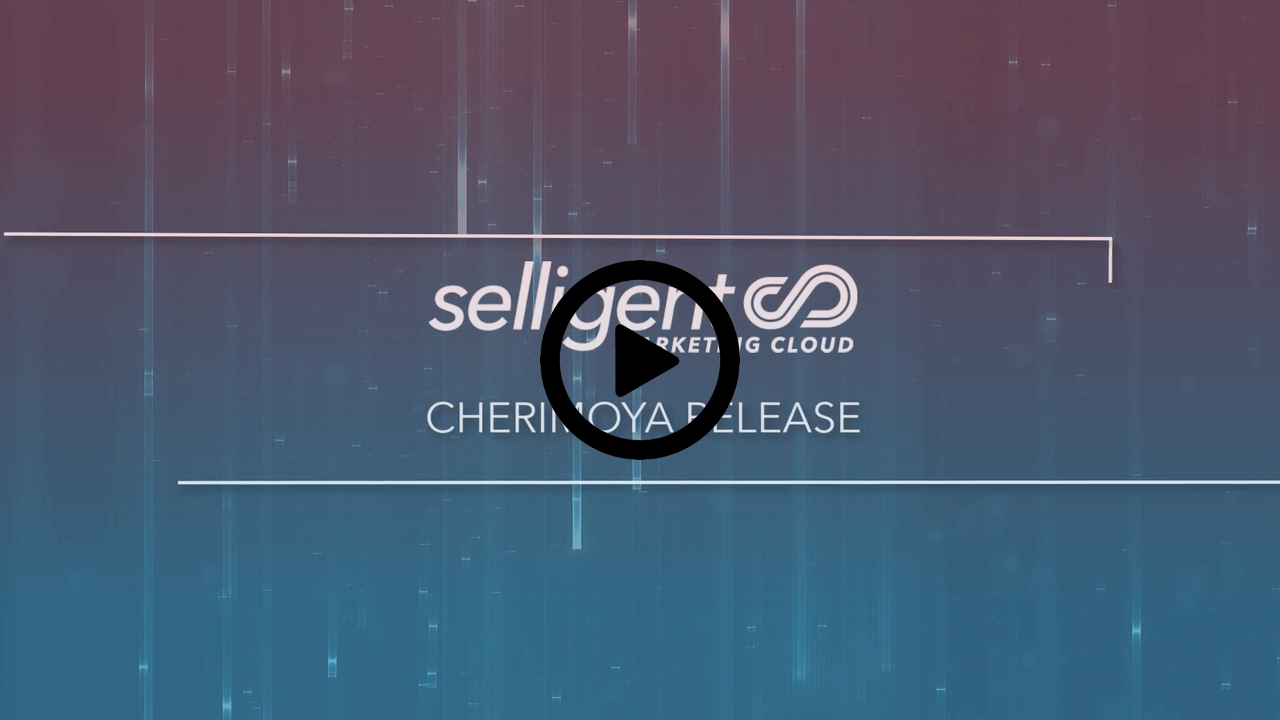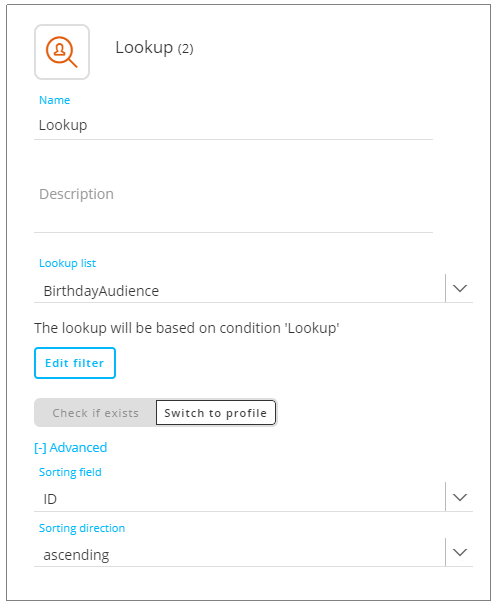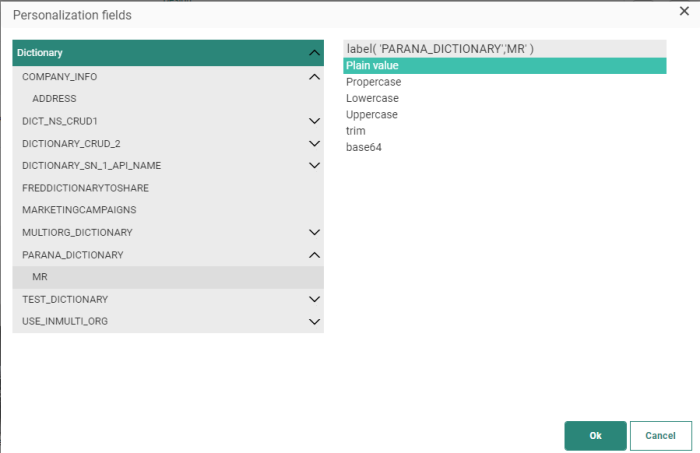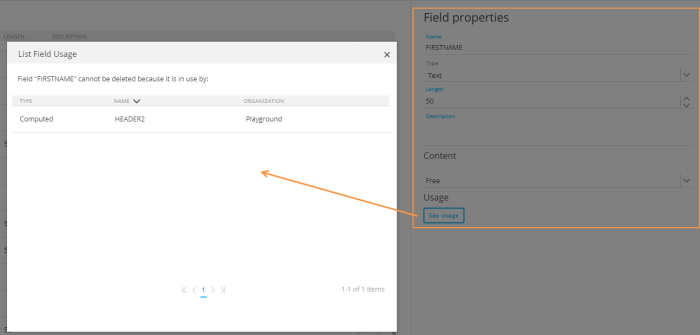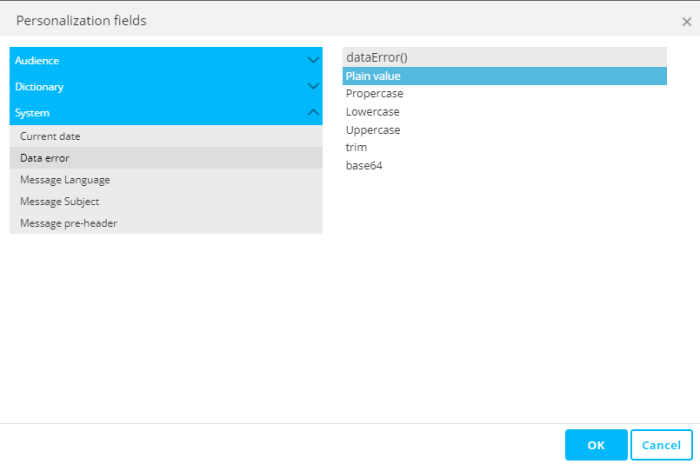What's New in Selligent MC
Release 2019 Cherimoya
Watch the release video to get a global overview of what is new in the Cherimoya release
Journeys
Lookup Component
The Lookup Component in Custom Journeys lets you now search for data in any list that exists for the current organization. Previously this was only possible on the parent Audience list. The ‘Switch to profile’ is only available for the Audience list though. This option to switch to a record in any lookup list will be added in a following release.
Moreover, the result of the lookup can be sorted. If several records are returned by the filter, you can sort the records for example with the most recently updated at the top.
Data Component
In a Custom Journey, data can be updated in the list as the result of an event in the journey. This is done through the Data Component. This Component has been extended to provide additional data handling , allowing to create or update records in all lists linked to the selected Audience list for this journey. This includes 1:1, 1:N and N:N linked lists.
In case of a record update, you can set a filter to limit the number of records in the targeted list and sort the result ascending or descending, returning one single record to update in the linked list.

Others
- The number of messages that can be tested in an AB Journey has been increased from 5 to 7.
-
Moreover, reporting on AB journeys lets you analyze the individual messages sent out in your AB Journey. To achieve this, a message analytics tag is set on the individual messages ensuring the AB test details are included in Google Analytics reporting. The tags can be set at creation time of the journey or after in the properties of the journey
Tasks
• A dedicated user right has been added to give users the explicit right to define mediums . Users who do not have this right but nevertheless have access to tasks and want to create/update a task will only be able to select a predefined medium..
• To increase the flexibility of the import function, Excel and RSS are now supported as a file type for Import tasks. JSON, XML and Delimiter were already supported.
Content
Content Block Enhancements
- When creating a template you can add placeholders where the marketer who uses the template to send out a message can add additional components. The marketer can now also add Content Blocks to this placeholder. For example, to personalize the message, a brand specific footer can be added to the message.
- Variables can be added to Content Blocks so that when this Content Block is used in a message, the marketer can easily define the values for these variables. What has been added in this release is the possibility to define default values for these variables.
Example:
<sg:var name="Mycolor" type="Color" value="BLUE"/>
- Moreover, you can now also set the options for a variable in a Content Block . This way, when the Content Block is used in a message, the user is able to select from one of the pre-defined options.
Example:
<sg:var name="MyValues" type="text" value="option2">
<sg:option value="option1 ">Option 1</sg:option>
<sg:option value="option2">Option 2</sg:option>
</sg:var>
Smart Content Enhancements
By using Smart Content in your messages, products can be recommended to the customer. To avoid recommending products that have already been viewed or added to the cart by the customer, an additional option is added to the Selligent Cortex algorithm configuration.
You can use 1 or all of these options to exclude products from your recommendation
Others
-
Messages that use repeaters to display items in the message and that allow marketers to add these items manually when sending out the message, now only display the fields to fill out for the selected layout instead of all available fields. This will speed up the process of manually adding items.
-
Push and In-app messages must now have a mandatory expiration date. The default expiration date is set to Today +2 months. To change this you can select a new date from the Date picker dialog.
- Any type of Response page can now be generated based on data stored in Selligent. This is a unique selling point of Selligent as this allows you not only to generate personalized HTML pages but also XML, JSON, CSS and plain text pages that can be used through the API for Content Automation.
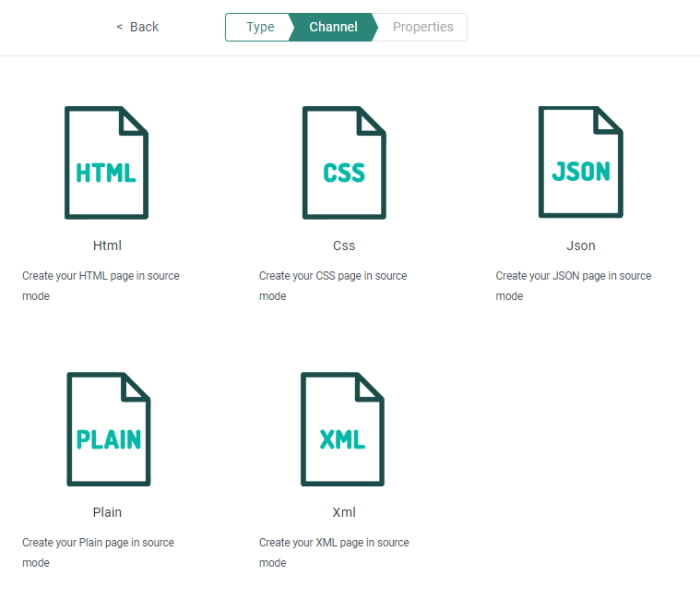
Folder Management
Folder Management lets you manage your assets in folders and subfolders, but also provides a series of additional capabilities to handle your content. The following features have been added to this release:
You can now copy an email to a folder in a different organization. When doing so, all settings (such as domains) for the targeted organization are applied to the email. Checks are made to only allow copy of emails for which the Content Blocks, Images, Audiences and Smart Content already exist in the targeted organization. An error report is available if the targeted organization does not hold these assets and copy won't be possible.
Copy into another organization is now also available for pages.
Emails can also be copied from the flyout menu.
Folder Management is now available for Tasks. The same functionality as available in the other sections is provided.
Use of dictionary and labels in content
Sometimes labels and sentences can occur at different locations in your content or journeys and translation into the contact’s language might be required as well. To tackle this in an easy way, you can store these labels in dictionaries and for each label add a translation.
Using and re-using these labels in content is easy by using a dedicated function to retrieve the translated label: [%label('DictionaryName','Labelname')%] . The right translation is automatically retrieved based on the language of the message. For ease of use, labels are also available from the Personalization dialog.
The dictionaries are stored under the Library section and can be shared among multiple organizations or attributed to only one organization. The languages available in a dictionary depend on the languages defined for the selected organizations.
Labels in a dictionary can be exported from the Dashboard to a CSV file. This allows you to have the labels translated and import them again into the dictionary. Inline editing or deleting a label can be done from the labels overview.
For easy access all recent dictionaries are also available from the Library fly-out menu
Validation is performed when trying to delete a dictionary or label and deletion is not possible when the label or dictionary is used in content
Interface Changes
Small alterations have been made to make the user experience even better:
• When defining filters on audiences the small Filter icon has been replaced with a bigger Edit Filter button.
Example in Audience Filter Component :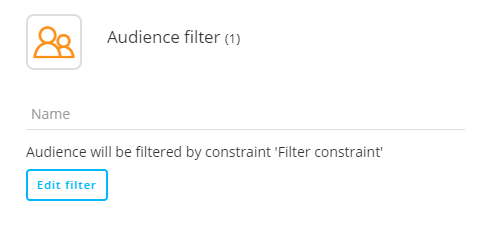
API Explorer
New capabilities have been added to the API Explorer .
• Possibility to delete tasks via the API
Others
It was already possible to create Computed fields in lists but the functionality is now supported for all data types.
The Field usage can be consulted directly from the Field properties in a List. A dedicated button is available to launch the dialog with the usage details. Moreover when trying to delete a field in use, the same usage overview will be displayed.
To simplify the use of data errors in content, they have been added to the Personalization dialog where they can be easily selected and added to your content. Data errors are for instance generated by the Validation Component.
Documentation
While going through specific topics in the online help, you will notice a series of small questions that allow you to test your knowledge on the topic. After answering the question, an explanation is given on why the answer is correct or wrong.
Corrections
Hotfixes on Blueberry Release
- Reporting — Journeys that were not found are now correctly managed
- Reporting — A clear error message is returned when content is not retrieved
- Segments — Several measures have been taken to boost performance for counts
- Segments — No more duplicate segments shown when one segment is used within multiple organizations
Corrections in Cherimoya Release
- Selligent Cortex — FTP password accounts can now contain a dollar sign
- Mobile — The mobile list is now loaded when validating a mobile Message
- Reporting — The Action ID is no longer missing for empty languages
- Content — It is now possible to switch between the different panels when the message is locked
- Content — The default cursor on images is now correct when adding links to the image
- Content Blocks — Expression in Content Block is now correctly translated when it is in a sg:lang tag
